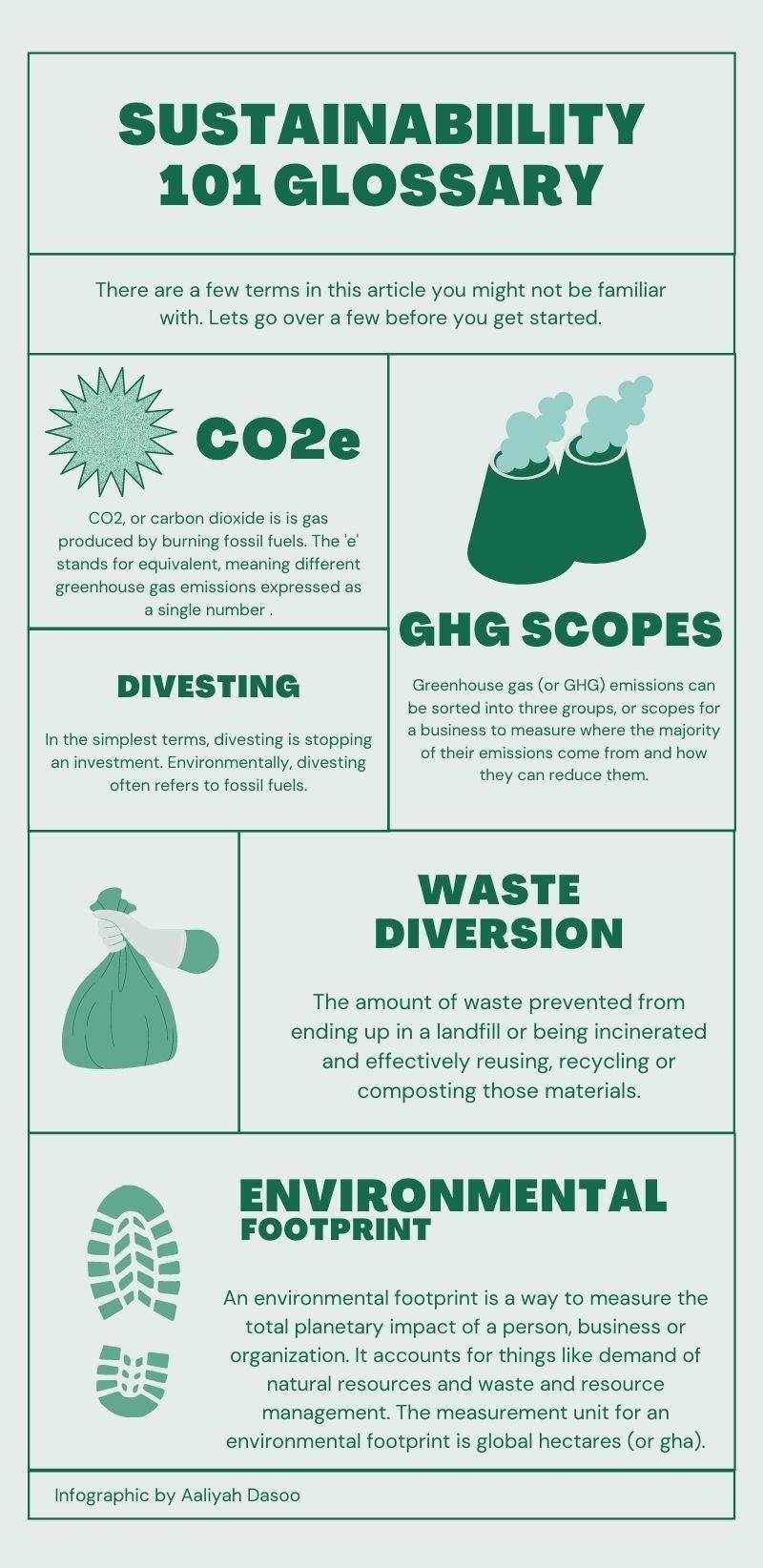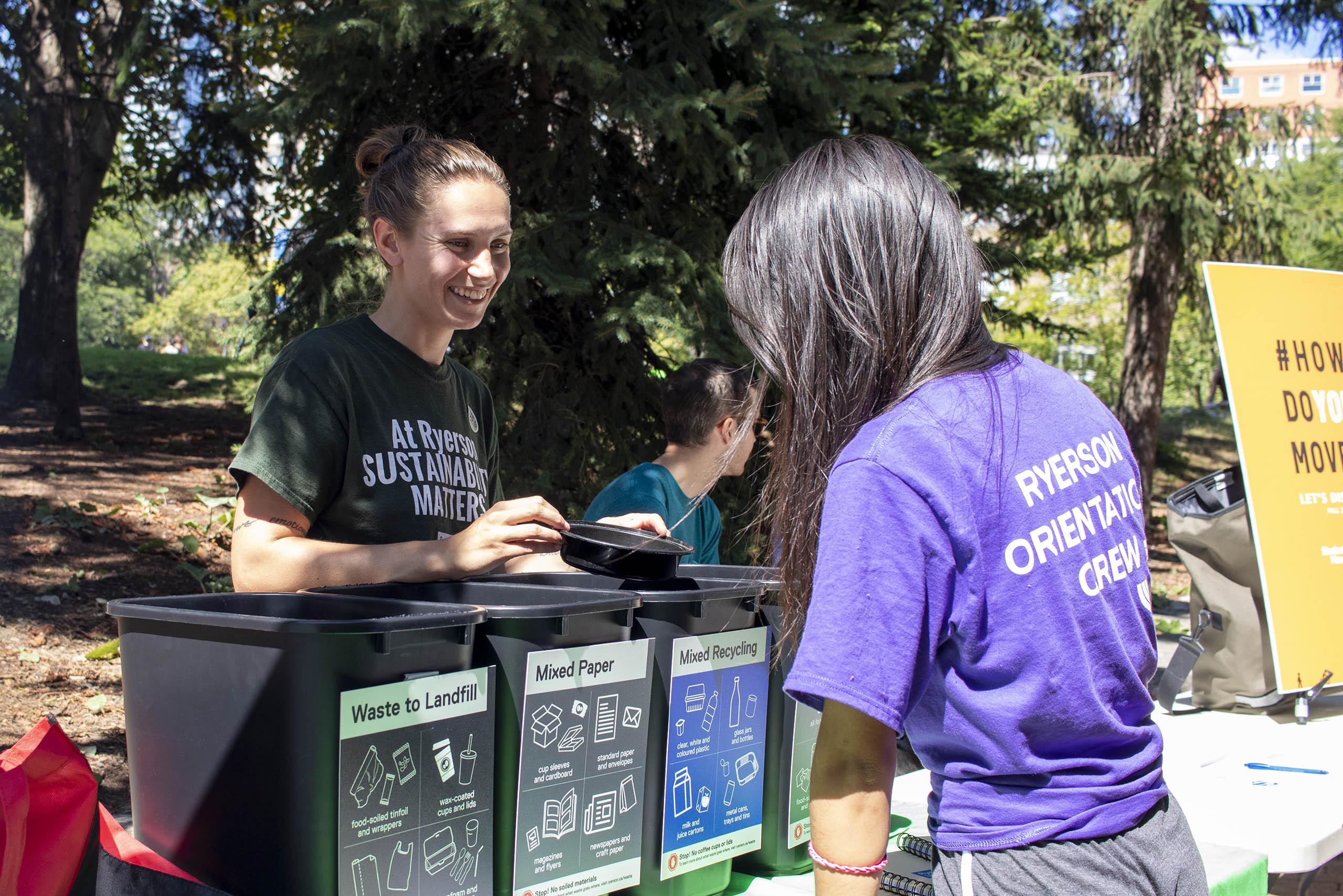By Aaliyah Dasoo
Ryerson’s Office of Sustainability is in the process of developing the university’s first ever Sustainability Action Plan (SAP) in hopes to publish it by the end of this year.
The SAP will highlight Ryerson’s institutional goals and priorities over the span of five years, including a focus on climate action, improving waste diversion and strengthening the integration of sustainability across the university, according to Stephanie MacPhee, Manager of Sustainability at Ryerson.
Although there wasn’t a formal or long-term plan established earlier, MacPhee explained that sustainability practices at Ryerson have been “in place for quite a while.”

“Just because there’s no kind of formalized plan doesn’t mean there hasn’t been a lot going on,” she said.
More recently, services like Facilities Management Development (FMD) and Ryerson Eats have been working on sustainability initiatives in terms of waste diversion and reduction of single-use plastics, respectively.
Ryerson’s waste diversion rate—the amount of material prevented by the university from going into landfills—is 40.5 per cent, or less than half of total waste. This is based on the most recent waste audit completed in 2019, since the university didn’t complete an audit last year due to the pandemic.
The Eye previously reported that a more consistent disposal system would allow for more waste to be diverted. The sustainability office is currently in its final phase of rolling out a four-stream waste receptacle, which separates waste into organics, bottles and cans, mixed paper and waste to landfill. Bins still need to be implemented across 12 buildings including the Ted Rogers School of Management, Rogers Communication Centre and the Student Campus Centre.
“I do think it’s important to have a formal plan and to set goals and measure ourselves against those goals and report it to the public so that they know… we’re working towards them, and show how we’re tracking, and our progress on them,” MacPhee said.
Other campus initiatives such as the campus master plan and the smart campus design are also tied into the SAP. “We want to make sure that our action plan aligns with that master plan so that we’re developing campus in a way that’s working towards a low-carbon or carbon-neutral campus,” she said.
Ryersons greenhouse gas emissions from 2019-20 came to 16,057 tonnes of CO2e. This includes scope one, two and three emissions.
Scope one emissions come directly from owned sources such as natural gas boilers; scope two emissions are indirect, meaning they come from the generation of purchased electricity, steam heating and cooling; and scope three emissions are also indirect but include things like landfill waste-related emissions, and staff travel by air and ground.
Ryerson’s role as a climate leader
The Eye previously reported that as stated in a 2019 Board of Governors report, Ryerson was investing in “fossil fuel companies such as Pembina Pipeline, which transports natural gas to and from Western Canada and Suncor Energy, which produces synthetic crude from the Alberta oil sands.”
The money Ryerson uses for this investment is from its endowment, as previously reported by The Eye. The endowment fund is made up of all the donations Ryerson receives and managed by Fiera Sceptre, an investment firm.
As per an email from Ryerson communications, environmental, social and governance considerations are taken into the investment process, such as whether or not the company demonstrates efforts to reduce their environmental footprint. There is no “exclusionary filter” preventing Fiera Sceptre from investing in fossil fuel companies.
Pembina Pipeline follows their own “‘carbon stand’ to reduce their environmental footprint and demonstrate their commitment to GHG reduction,” according to Ryerson communications.
M J Wright is a Board of Governors (BoG) student representative, who is working on divestment efforts at Ryerson through his role as a board member. In the past, students like Wright have been involved with groups like Divest Ryerson and Fossil Free Ryerson in an effort to promote climate action and spread awareness on Ryerson’s investments.
Currently, Wright is working with the BoG to navigate these investments and see how they can be changed.
“The phrase we’ve been hearing constantly from Ryerson is this idea of being ‘unapologetically bold’ in their decision making and their planning. And I want that to be reflected in the way they invest,” said Wright.
“I want to see real action being taken to make things better. To divest from fossil fuels will be one step, but also from companies that enable fossil fuels”
Wright said that he thinks it is possible to divest entirely, but students need to see Ryerson take a more serious and intentional approach to the issue.
“I want them to move towards taking ESG aspects of investments more seriously than I think they have been so far.”
Though Wright said he is unsure if this can happen within his time on the BoG, he hopes he can inspire more students to continue this work once he leaves.
“I want to see real action being taken to make things better. To divest from fossil fuels will be one step, but also from companies that enable fossil fuels,” he said.
Nine Canadian universities rank in the top 100 universities for climate action, including the University of Victoria, McGill University, Carleton University and the University of British Columbia (UBC). Ryerson, meanwhile, did not make the list.
UBC, which ranks first on the list, has had their climate action plan in place since 2010 and has their own website dedicated to it, which includes up to date information and data visualizations.
While MacPhee said it’s likely the Ryerson sustainability website will remain as a section under FMD, she said there are team members who are keen to set up data visualizations and can see how that kind of transparency would be interesting for students.
She also said that the office is working on providing more data and updating the website at least annually with a web-based highlights version of the report.
MacPhee has been working at the sustainability office since this past summer, and said that though she couldn’t speak to why an action plan hadn’t been completed earlier, “there’s certainly a big focus on it now.”
She added that a lot of the time, staff and resources go into producing an action plan, and that the pandemic has created more opportunity to strategize.
“It was always on the to do list…I think the pandemic has given us a little bit of breathing room to be able to do some more of the planning that perhaps there wasn’t as much time to do before.”
MacPhee also made the distinction that the SAP would be different from a Climate Action plan, which the office is working on separately.
“Climate is such a big issue, it deserves its own focus,” she said.
Currently, the SAP is in its consultation process, which includes a university wide survey, focus groups and interviews with different campus groups.
MacPhee said it’s important to understand what the community would like to see Ryerson prioritize in terms of sustainability performance. Once complete, the sustainability office will begin to set goals and figure out what to focus on most in the SAP. She said she hopes this process will take about six months.
She also said that the office is not only focused on environmental sustainability, but also social and economic sustainability. As of now, the SAP project has not consulted with Indigenous community members, but MacPhee said that there are “absolutely plans to include them later” and hopes to partner with them.
The SAP survey closed yesterday.










